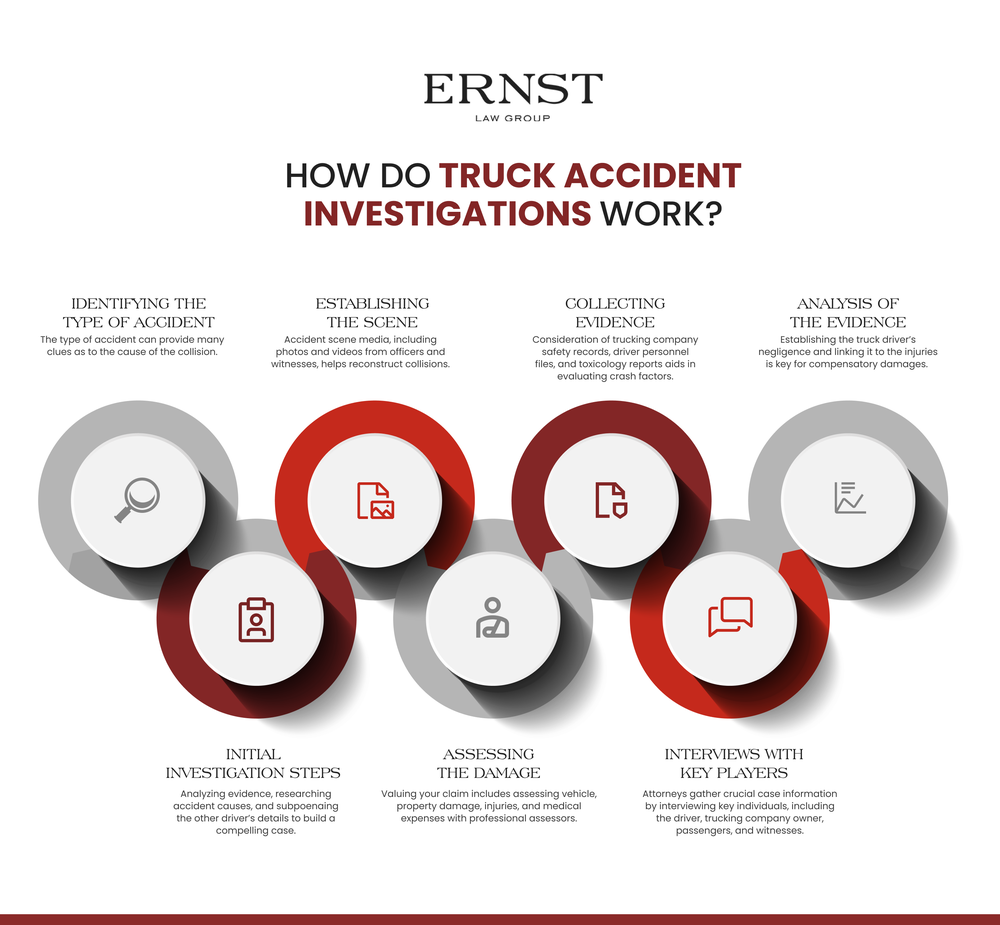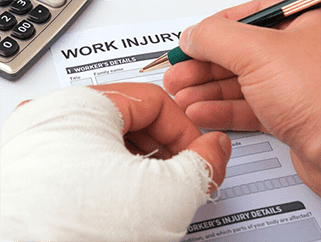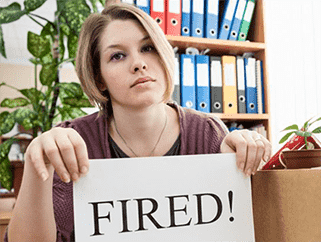You deserve full
compensation
needs in San Luis Obispo County and throughout California.
Request a Free Consultation
San Luis Obispo truck accident attorney
What is a semi-truck?
A “semi-truck” is a freight-hauling vehicle consisting of a heavy-duty cab/engine attached to a large, multi-axle trailer. The combination of cab and trailer is also sometimes called an eighteen-wheeler, a tractor-trailer, a big rig, and, in Great Britain, an “articulated lorry.”
Google Trends data shows that “semi-truck” is the most common term for the vehicle across most U.S. states. The exceptions are along the eastern seaboard, where “tractor trailer” is most common, and in the south, where “eighteen-wheeler” is frequently uttered.+
Semi-trucks actually get their name from semi-trailers. Since a semi-trailer does not have front wheels and cannot be hauled on its own without a truck cab, it is known as a “semi” trailer rather than a full or complete trailer. Since the specialized cab hauls the semi-trailer, it has come to be known as a semi-truck.
Semi-truck accidents can be particularly dangerous with a trailer attached since the large, heavy apparatus can damage several vehicles at once before coming to rest potentially across multiple lanes of traffic. But even a cab by itself commonly weighs over 20,000 pounds, meaning that an accident that could be a minor fender bender if two passenger vehicles were involved instead turns catastrophic.
Laws aimed to reduce semi-truck accidents
The operation of semi trucks and semi-trailers is governed by the Federal Motor Carrier Safety Administration (FMCSA). This federal agency sets forth rules and regulations with the purpose of reducing crashes, injuries, and fatalities along the road. A secondary objective is to reduce unsafe practices that could lead to the destruction of the environment and unnecessary wear on the nation’s road infrastructure.
There are also a variety of California State institutions that enforce their own rules and regulations. These entities include the California Department of Transportation (Caltrans), the California Department of Motor Vehicles (DMV), the California Highway Patrol (CHP), and even the California Department of Food & Agriculture (CDFA).
State and laws for semi-trucks dictate minimum training requirements, safe driving practices, and laws like how large of a load the truck can carry.
Big rig accidents
Big rig accidents are another term for semi-truck accidents. They are serious incidents and often involve serious injury or death.
Big rigs consist of a tractor, which is the front part of a semi-truck, pulling a trailer, which is the back section that carries cargo.
When a big rig crashes, it causes ambulances, fire trucks, police, and safety crews to respond. The accident also can snarl traffic, and lead to further accidents, due to the freeway traffic not moving properly.
Big rigs, like semi-trucks, must abide by the Federal Motor Carrier Safety Rules. These are laws that apply to every state. Known as the FMCSR, these rules are designed to keep the public safe from the large big rigs that travel hundreds of millions of miles every year.
May be hard to believe for some, but lawyers actually play a large role in keeping the public safe as well. Lawsuits make it expensive for large commercial vehicles to take unnecessary risks, because of the fear of a case. When big rig trucking companies cut corners, they deserve to be sued, especially when the result is injury or death. Trial lawyers often refer to this concept as justice. If big rig companies are allowed to cut corners and the injured and wrongfully killed people do not sue, it is similar to the community giving the dangerous behavior of the corporation a pass to continue that behavior. The result will be more accidents and more unnecessary pain.
Double-rig truck accidents
A “double-rig” refers to a configuration where two trailers are joined together with a semi-truck in a train. The first trailer will be attached to the main truck cab/engine, while the second trailer will be hitched to the end of the first trailer. This configuration creates two articulating pivot points: one at the front of the first trailer as normal, and another 15 or more feet behind this point.
The combination of two trailers leads to complex physics, making the rig require more care and skill to drive, turn, and especially back. Articulating points allow the truck to generate extra force at the end of the final trailer, similar to the children’s game “Crack the Whip.” The train of trailers is also less stable compared to a single trailer, increasing the likelihood of accidents. A single operator mistake can in turn create a devastating double rig accident.
Because double rigs have complex laws and operational requirements, the average person may not know how to determine who might be liable for an accident and to what extent. An experienced double rig accident lawyer will be knowledgeable of the relevant state, federal, and case law. They may know, for instance, if the driver made a significant error during an operation that would not normally cause an accident with a single semi-truck/trailer combination. With this information, they can present their arguments and help double-rig accident injury victims pursue the maximum available compensation for their damages.
Why double rig accidents occur
Unfortunately, many truck drivers do not have the sufficient qualifications, training, or experience to operate double rigs. They are instead simply expected to “learn while driving.” However, having two articulating hitch points can create challenges that a single one never would. The skills needed to operate a single semi-truck/trailer combination do not always translate.
This situation is clearly not safe for other drivers on the road, and trucking organizations have long pushed to have mandatory safety training and requirements. Fortunately, California is a state that mandates special testing and licensing before you can operate a double rig. In other states, though, these trucking requirements differ. Often, the credentials needed to drive a double have the exact same requirements as driving a single semi trailer: just a commercial driver’s license.
As an example of how difficult managing a double rig can be, consider the act of backing up. Backing a double rig is significantly different than backing a regular tractor-trailer. It has double the pivot points and therefore does not behave as a normal trailer when the driver is reversing. When you back to the right, the furthest back trailer will angle to the left. As with most things with these large trucks, any type of unsuspected movement with semi-trucks can cause accidents, injury, and death.
There is even an app for helping back a double trailer. ZF makes an application that is still in the demonstration stage. The app allows drivers to back up the semi-truck through the electric power steering. This allows the driver to back up the truck remotely. It is not a commercially available application yet, but rather a way to demonstrate the safety of backing up two trailers at the same time using technological assistance. As it is now, a truck driver must call on the radio or repeatedly get out and look to make sure they are not going to hit anything. The situation illustrates just how risky double-rig semi trucks can be to the health and safety of people on public roadways.
Ore hauler truck accidents
An ore hauler is a large heavy-duty construction vehicle or specialized semi-trailer used to haul loose materials. Sometimes, an attached-bed dump truck or haul truck will be used instead of a semi-truck and trailer combination. Common materials carried using an ore hauler vehicle include mined ores, crushed rock, loose dirt, and construction debris.
The weight of ore haulers and the nature of the loose materials they carry can lead to catastrophic accidents that have a higher likelihood of serious injury or death. The operation of ore haulers is therefore strictly governed by Federal Motor Carrier Safety regulations. There are also likely to be rules applied to the respective industry operating the vehicle, such as mining or construction injury.
Having a specialist ore hauler accident lawyer with knowledge of specific industry regulations and past case outcomes can help victims account for the uniquely dangerous circumstances ore hauler accidents present. With the knowledge of their ore hauler accident lawyer at their side, they can pursue the maximum available compensation to help them recover and continue their lives.
Why hauler accidents are so dangerous
Ore hauler accidents can be particularly dangerous for a number of reasons, frequently causing serious injuries, paralysis, and death in the aftermath. Firstly, loose materials can shift around during transport. The complex physics of this shifting material can sometimes catch drivers by surprise, such as during sharp turns or sudden stops. A minor incident like a jerky steering correction can transfer energy to the contents of the hauling bed, possibly forcing the vehicle off course or even overturning the ore hauler.
The second danger factor of ore hauler accidents is their unsecured cargo. Some trailers and haul truck beds leave the materials exposed. Others attempt to secure the material with tarps. In either event, a major ore hauler collision or turnover will spill the contents. Accident victims can be injured by the weight of the debris or trapped underneath it, risking suffocation.
In addition to traffic accidents, ore haulers can also have accidents with the loading and unloading of material. Materials are often loose, and hundreds of loading and unloading events occur every day. Each and every single one of these loading occurrences invites the risk for a deadly or dangerous incident.
When operated off-highway, ore haulers pose tremendous risks to fellow workers and contractors. Job-sites are often much more dangerous than the freeway or clearly marked roads. Recognizing this elevated risk, job foremen have frequent safety meetings and discussions about how the heavy vehicles will operate around the site. Even still, the fact that there are cones instead of painted lines and unpredictable comings and goings of workers puts everyone in peril.
Tanker truck accidents
A tanker truck is a semi-truck hauling a specialized storage tank trailer that contains chemicals or other liquids. These heavy-duty vehicles tend to have shorter lengths compared to the average tractor-trailer configuration, but they happen to be even more dangerous.
A tanker truck trailer can carry anywhere from 5,500 to 11,600 gallons of liquid. These liquids can be flammable, acidic, toxic, or otherwise hazardous to your health. An overturned tanker can therefore cause injuries not just from the initial crash. Explosions, fires, and exposure to hazardous materials are all possible. Many vehicles are likely to be affected in such a crash, and the environmental effects of a spill can contaminate properties, waterways, and sensitive ecological habitats.
An expert tanker truck accident lawyer is often called upon to handle the aftermath of such an incident. Accident victims can benefit from a tanker accident attorney who has extensive knowledge of the laws governing tanker transport and the rules that apply to specific industries. For instance, certain liquids may require a higher standard of care or fall under special compliance rules to reduce the chances of an accident.
Why tanker truck accidents are so dangerous
Volatile liquids aren’t the only reason that a tanker truck collision can be so worrisome. The physics of the tanker trailer itself poses all sorts of problems to drivers.
First, tanker trailers tend to have a higher center of gravity than the typical semi-trailer. The tanks are set upon a specially engineered flatbed that makes bumps less likely while allowing for easy access by machinery. Carrying the load up high increases the risk of the vehicle overturning during a tanker truck incident.
Secondly, the liquids inside the tanker can pose problems of their own. When the tank is “dry”, or empty, carrying the load is similar to any other semi-truck. A full tank creates the mentioned high center of gravity issue, forcing the operator to adjust their driving habits to reduce risks of rolling over or other incidents. Partially full tanks, though, pose the biggest threat of serious accidents.
When a tanker truck is partially full, the liquids inside of them have space to move during transport. The sloshing movement of the liquid can generate forces similar to a coastal wave, causing the truck to lurch unexpectedly or resist changes in direction. Sometimes, the liquids can slosh around so violently that they turn an otherwise stable truck into a deadly juggernaut.
All of these risks on top of the hazards the liquids themselves create mean that tanker truck drivers must be highly trained and certified. They are expected to exercise a greater degree of care during operation, especially when hauling a partially full tank. Accordingly, they may be held accountable for more liability or negligent behaviors compared to the average truck driver.
18-wheeler accidents
Eighteen-wheeler accidents are another name for a semi-truck accident that occurs when the truck has 18 wheels. These accidents are just as serious as semi-truck accidents, and you will most likely need professional medical and legal attention to help sort out all of the complications that will arise.
Why they’re called eighteen-wheelers
Simple enough, these types of semi-trucks have eighteen wheels. Each cargo container has 16 wheels supporting its weight. The cab of the 18-wheeler contains 10 wheels, but eight of them are already supporting the cargo container. In total, there are 18 wheels on an average size semi-truck.
Eighteen-wheelers suffer the same types of problems that cause semi-truck accidents. They face problems with rollovers, loss of control, traveling too fast, long hours, and other types of accidents.
Loss of Control
Eighteen-wheelers generally will weigh about 40,000 pounds when they are fully loaded. This is 20x the weight of a car. They have trouble stopping quickly, turning quickly, or avoiding sudden emergencies. Trucking safety experts, such as J.J. Keller will frequently instruct truck drivers to be looking way down the road, to try to spot problems as early as possible. Eighteen-wheelers do not react nearly as quickly as other vehicles, and the more time an 18-wheeler driver has, the more likely they can avoid a collision.
Traveling too fast
Eighteen-wheelers will get in accidents when traveling too fast. Traveling too fast is more dangerous for an 18-wheeler because the weight of the truck makes it take significantly longer to slow down. When lawyers are needed due to insurance not paying injured parties, lawyers will often hire experts to demonstrate how much longer it takes to slow down a semi-truck from 55 miles an hour. These experts testify time and time again, that there is a certain area in front of every 18-wheeler that is called the “kill zone.” If there is something that suddenly is in this zone, there is nothing the truck driver can do to avoid hitting you.
Long hours
Eighteen-wheeler drivers have regulations that state the number of hours they can work. However, drivers often will take and drive more hours to make a larger paycheck. This leads to sleep disorders and endangers everyone else driving near and around that 18-wheeler.
Jackknifing
This is a slang term that is often used by the media to describe an eighteen-wheeler accident where the trailer is 90 degrees perpendicular to the semi-truck cab. When an eighteen-wheeler trailer gets into this position, an accident will happen. The only question left is how bad the accident will be.
Semi-trailer accidents
A semi-trailer accident occurs when there is an accident between the semi-trailer and another vehicle or person. Sometimes there will be no tractor involved as if the semi-trailer was parked incorrectly, collapsed, or tipped over on another vehicle or person. Other times, the semi-trailer is the object that causes the accident, and there is no damage to the tractor (the front portion of the semi-truck).
Semi-trailers also can cause accidents when they are improperly hooked up. When a trailer is improperly hooked up, there are a number of problems that can lead to a semitrailer accident. Improper attachment of a semitrailer can make the brake lights and lighting on the sides of the trailer fail to function. This leads to poor visibility and surprises other vehicles when the semi-truck slows, but no brake lights indicate this slowing to other drivers. This causes vehicles to rear-end the semitrailer.
Common reasons semi-trailer accidents occur
Semi-trailer accidents can also occur when the trailer has unordinary equipment. Sometimes equipment on the semitrailer can be unbalanced, prone to movement, or even come unsecured while in motion.
Unbalanced
An unbalance in the semitrailer can make it impossible to steer. Most notable are the semitrailers that haul liquid. When the liquid semitrailer is empty or full, the trailer behaves normally. However, if the semitrailer is half full of liquid, the trailer is extremely prone to rollovers, tipping over, jack-knifing, and losing control, because of the high center of gravity of the trailer, and the uneven weight distribution after the trailer starts moving.
Prone to movement
When semi-trailers are stacked improperly, or there are two or even three semitrailers, the trailers are considered prone to movement. This means that the trailers are more likely to move inconsistently with the way the truck driver expects. Improperly stacked loads will shift and will force the semi-truck driver to correct or over-correct.
Any inconsistent movement is likely to cause a semitrailer accident. When there are two or three semi-trailers, they function with different pivot points, causing the trailers to veer out of lane on turns, and be very difficult to back up in a straight line.
Unsecured movement
When semi-trailers have their load shift, move, or have an apparatus that comes unhinged, the resulting movement can force the driver of the semitrailer to be unable to control his vehicle. The unsecured movement on the semitrailer is unexpected and usually occurs when the semitrailer is in motion, and often around a turn.
These types of movement, sometimes accident-causing movement can be avoided with proper pre-trip and post-trip inspections. The inspection cannot prevent unsecured movement, but it can reduce the risk of the movement as much as possible
Double-wide truck accidents
A “double-wide truck” can refer to any truck carrying an oversized load. Since the maximum possible load is often double the width of the flatbed semi-trailer, trucking industry and highway safety officials often refer to the load as a “double wide”.
Large mobile homes are one of the most common loads being hauled on a double-wide rig. Other possible materials include heavy vehicles, large construction materials, intact slabs, or quarried stone. All of these materials generate significant challenges compared to a typical enclosed semi-truck load.
In response to the difficulty of carrying an oversized load and the catastrophic injuries or deaths that could result from such a load overturning, double-wide truck operators have a higher standard of care than the average trucker.
Laws set by the Federal Motor Carrier Safety dictate how such a load must be secured, how to make the load visible to other drivers, how to inspect the vehicle and load before hauling, and how to generally operate the vehicle safely. There are also extremely strict rules governing what routes a double-wide rig is allowed to travel through. Ignoring any of these rules and regulations carries the potential to cause a major double-wide truck accident that could easily result in serious injury or death.
Proving that a double-wide truck operator or hauling company was negligent often requires the help of an experienced double-wide truck accident lawyer. A double-wide accident attorney will be familiar with the unique rules and regulations put in place to reduce the risk of an accident. They can therefore document more effectively where a liable party may have been negligent in their duty of care to others on the road.
Why double-wide truck accidents are so dangerous
There are several factors that make operating a double-wide rig much more dangerous than any average semi-truck load.
For starters, large loads can obscure the view of the driver and create unusual blind spots. While large semi trucks have special mirrors used to view along the length of the trailer, the load can still block visibility from certain points. Driving with half a house behind you can also mean having a limited line of sight in most directions. Knowing this, drivers are expected to exercise extreme care before changing lanes or maneuvering.
Secondly, double-wide loads absolutely have to be secured properly. Each large load presents its own challenges for how to be fastened down and completely secured even while the truck moves around at highway speeds. Wind resistance, unusual shapes, and shifting weight can all create challenges that must be accounted for before the truck can safely depart.
Speaking of challenges, the varying nature of double-wide loads can create its own problems. Something like a large trailer home may be partially unbalanced on one side. Other oversized materials, such as large concrete sewage drains, can potentially wobble or create awkward centers of gravity. Even an experienced double-wide semi-truck driver could get caught off guard by an unfamiliar material they’re hauling.
In the same vein, the unpredictable nature of oversized loads presents another problem to trained and experienced double-wide rig operators. They may rarely haul the exact same material twice, preventing them from being able to operate their vehicle by a generic set of safe practices. Instead, they must be able to predict and accommodate the unique challenge each load brings.
Tractor-trailer accidents
A tractor-trailer accident is often a serious accident that causes serious injury, and sometimes death. Last year alone, there were more than 3,000 fatalities that involved tractor-trailers in the United States.
Each time there is an accident a tractor-trailer causes serious injury or death and affects more than just the injured. The family of the injured must learn to accommodate the injuries and possibly permanent changes. If there is a death, the family and friends must adjust to the hole in their life. Tractor-trailer accidents are often horrific, yet every year organizations get together to try to reduce the risk of future tractor-trailer accidents.
The Federal Motor Carrier Safety Regulations are in place for a reason. The rules and regulations are applicable to motor carriers in most states and when trucks travel between at least two states. In addition to these rules, there are companies that do nothing except provide education and safety training courses for truck drivers and tractor-trailer companies to try to reduce these accidents as much as possible.
Best way to reduce tractor-trailer accidents
Tractor-trailer accidents are not caused by a single wrong act. Insurance companies would like you to believe it is one fluke problem that leads to an accident. It is almost never a single problem. Accidents occur from a series of cutting corners and failures that add up until there is the final incident.
For example, this is a hypothetical based on a true story: A tractor-trailer turns left across a highway, and a truck hits the side of the tractor-trailer, killing the individual driving the truck.
At first glance, the only mistake is that the tractor-trailer driver turned left across a highway. Yet when the tractor-trailer accident is evaluated, there are multiple wrong acts that all lead to the result.
- The tractor-trailer had little lighting on the side of the truck, so traffic traveling at the side of the truck could not see it.
- The tractor-trailer pulled across the freeway at night
- The tractor-trailer’s route did not include a safe place for the tractor-trailer to turn around
- The road was not designed with a large enough merging lane for the tractor-trailer, and therefore once halfway across the road, the tractor-trailer had to wait until traffic was clear to pull onto the highway
- The tractor-trailer driver had driven three days in a row, with more hours than allowed by law
- The tractor-trailer company booked the driver for too many days in a row. The tractor-trailer driver never read any safety guidelines regarding pulling across highways and did not consider it a dangerous condition
- This is the start of all the things that went wrong. Each one of these actions was a single incident, that ended up culminating in the large collision that lead to a man’s death
Lawyers were able to discover all of this information only after a case was filed. The news did not discover it, the highway patrol did not discover it, nor did the police. The lawyers were the ones who learned of all the wrongdoing and made the community a safer place by bringing the case. The case result was one that told the tractor-trailer company that cutting corners is not cost-effective when it comes to safety.
Your trusted California trial lawyers
When you or someone you love suffers an injury in California, the physical, emotional, and financial worries can be overwhelming. During this trying time, you need help from a professional legal advocate with experience. Ernst Law Group is the premier trial law firm on the Central Coast. Our firm has the resources to take a case to trial and lawyers with experience winning cases against the biggest corporation and insurance companies in the business. We are fighters who only represent the injured, never insurance companies.
We also do not charge legal fees or costs until we win your case. Give us a call now at 805-541-0300 or contact us online to schedule your free consultation. we’ll explain how we can help and answers key questions, including:
- Do I need a trial lawyer in California?
- Can I get compensated for a personal injury?
- How can a trial lawyer help?
Meet Our Team
With over 35 years of experience, Don Ernst leads a team of highly experienced attorneys to represent victims of personal injury in San Luis Obispo.
Contact Us Today for a Free Consultation
How can Ernst Law Group help?
Schedule your free consultation by calling 805-541-0300 or contact us online to learn about the legal services we can offer you.





















